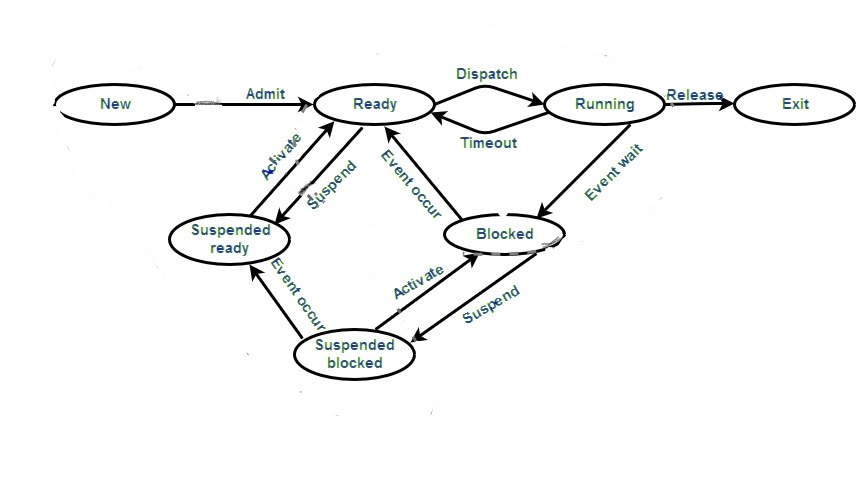Support this post with a reaction:
Depending on the design, the process model describes the seven states of processes.
There are 7 states of Process

- New: This is the state where a new Process creates. A program that is selected by the operating system into the main memory is known as a NEW process. In this state, the Process is about to be created but not yet created.
- Ready: Once the Process is created, It enters into the ready state. Here Process has loaded into the main memory. The operating system selects the new processes from the secondary memory and loads all processes in the main memory. The NEW processes which are prepared for the run are referred to as READY state processes.
- Running: Based on the scheduling algorithm, the operating system will select one of the processes from the ready queue for execution. That Process is currently assigned to a processor and is running. Here CPU maintain the process execution in the queue. When we have one CPU in our device, the number of running processes for a separate time will be single.
- Blocked or Wait: When a process needs some resource to continue the execution, delays happen in allocating a particular resource. In this case, an operating system put this Process to the wait or blocks state. And start executing the other Process.
- Terminated or Completed: If a process completes its execution, it moves into the termination and completion state. Here Process is killed by OS, and PCB is also deleted.
- Suspend ready: The Process in a ready state is coming into secondary memory, placed by the scheduler. Once processes again moved back into the main memory, their state changed to ready.
- Suspend wait or suspend blocked: Related to suspend ready except usages the Process which was functioning input/output procedure and failure of main memory leads them to come to the secondary memory. When the job is completed, it may come into suspend ready state.
